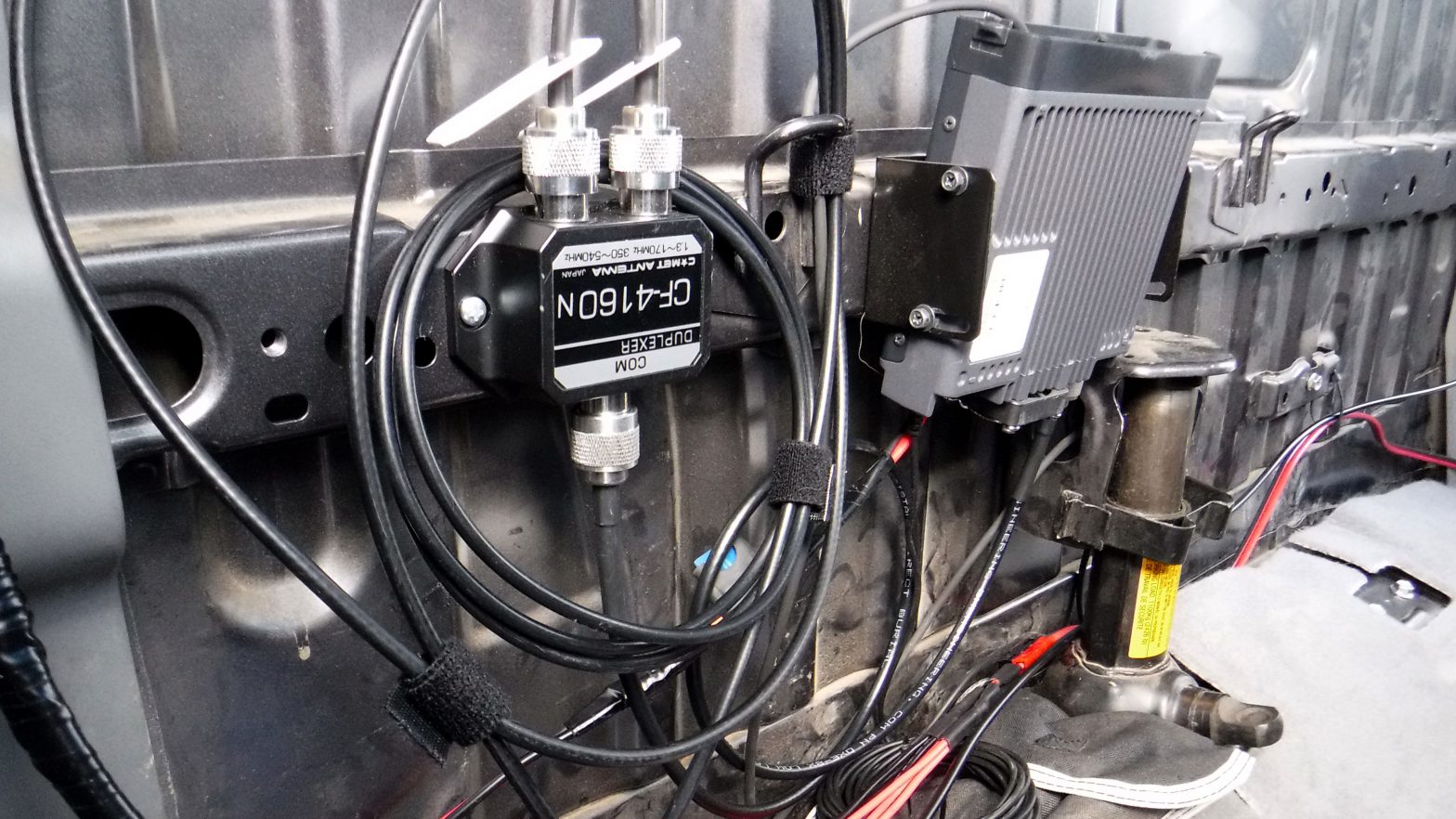Congratulations! You now have a background in the components of a good weak-signal VHF/UHF station:
- Transceivers
- Antennas
- Coax
But what does it look like when everything is put together? After all, it is one thing to have a pile of parts, but quite another to assemble it all into a good station.
Scroll down or click the links below to see some example stations:
Parks on the Air
When setting up for Parks on the Air anything goes: HF, VHF, UHF, or even microwaves. This station was set up on the Hope side of Turnagain Arm in the pre-dawn darkness of winter.
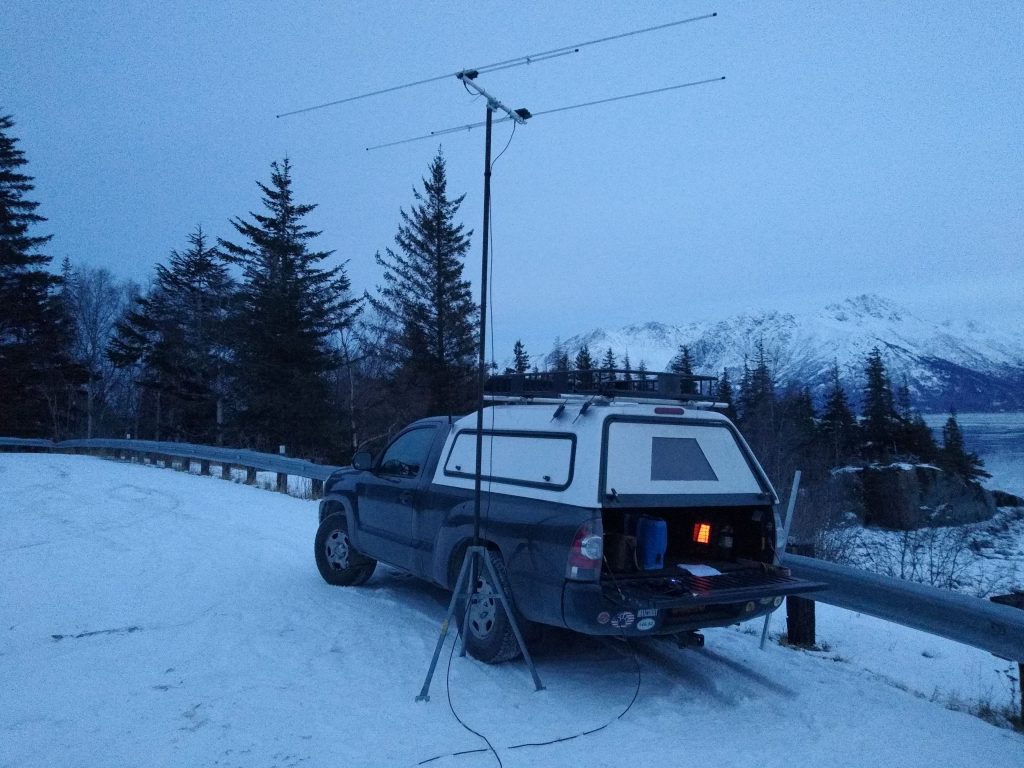
This site was pretty minimalist. A yaesu 891 was used for 6 M capability, while a Yaesu 817 was used for 2 M operating. The Yagi antenna visible above is a Diamond AH502HB model (note horizontal polarization), fed with a run of LMR-240 UF coax. Some 2 M contacts were made using the whip antenna mounted on the vehicle.
A laptop was used for logging as well as rig control. After the Saturday morning SSB net on 2 M activity shifted to 6 M for a while, and then on to HF with a loaded vertical antenna (not shown).
Single-Operator Portable
A single-operator portable (SOP) station is a type of entry used in contests. The basic idea is that you leave your regular home station for the day and set up somewhere that offers better views, less RFI, or both.
For this event the operator set up on top of a mountain with great views all around.
Antennas were a three-element Yagi for 6 M, an 11-element antenna for the 2 M band (12 dBd gain), and a 20-element antenna for the 70 cm band (15.3 dBd gain).
LMR-240 UF was used for 6 M and 2 M, while LMR-400 UF was used for 70 cm.
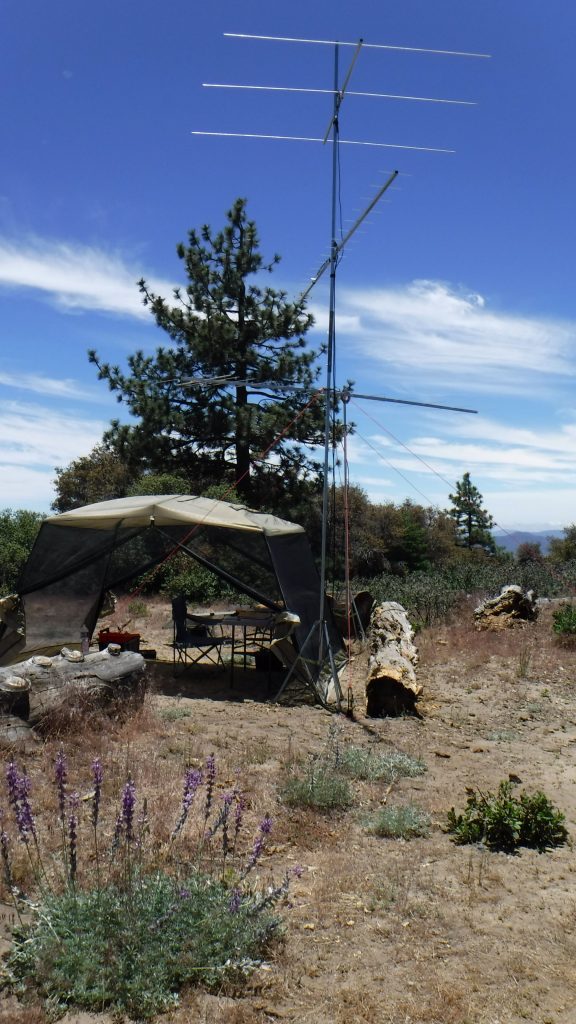
Something to point out was that this station did not use a rotator. Rather, the “armstrong” method was used. In some cases this is less of a disadvantage than it may sound. If your location puts you high up and most of the other operators are in a particular direction (as was the case here) then the need to rotate the antenna is minimal.

A nice thing about single-op portable stations is that you can spread out and be comfortable. A shade structure, battery bank, solar panel, and laptop rounded out the station.
Rover Station
Entering a contest as a rover station is tons of fun. These photos are from the 2018 September VHF contest, when the club sent a rover entry around south-central Alaska.
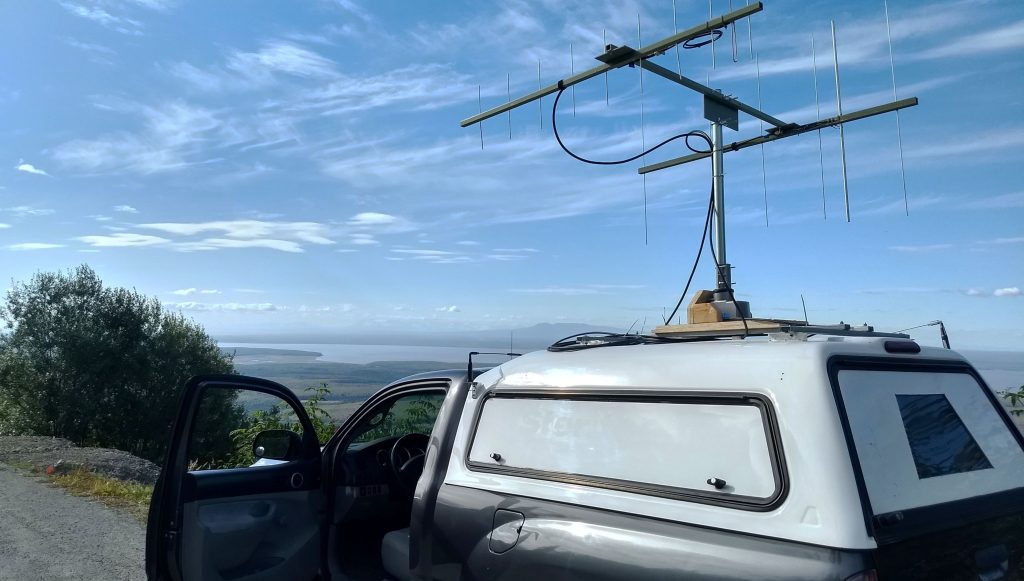
The antennas for this station were a pair of WA5VJB “Cheap Yagis” that were made by the operator. The rotator is holding antennas for both the 70 cm and 2 M bands. A folded over whip antenna was pressed into service for basic capability on 6 M (not ideal).
Two types of coax were used. For the 2 M line LMR-240 UF was used for flexibility and reasonable losses. The 70 cm antenna required a higher grade of coax, so LMR-400 UF was used there. All connectors are Tpe-N.
The rotator itself is a light duty MFJ model, although a regular TV antenna rotator would also work. Some uni-strut and plywood made a strong connection to the vehicle’s camper shell, and the setup held together perfectly.
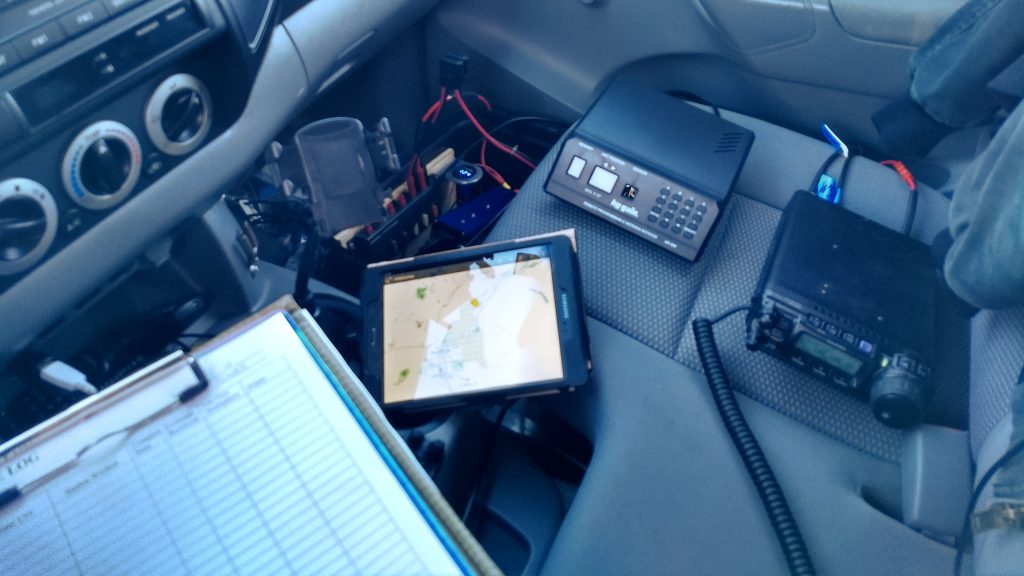
Logging was done using good old pen and paper, although that requires a tedious process of transferring everything into the computer later on. N1MM logger is a better option.
The main contest radio was a Yaesu 857 ND, with SSB capability on 6 M, 2 M, and 70 cm. The vehicle’s main radio (under the tablet in this photo) was used to broadcast position information on APRS. This allowed other contesters to know when the rover was on the move. A tablet connected via bluetooth to a Mobilinkd TNC handled the APRS control functions.
A rotator needs power to rotate, so a 12V-120V inverter on the floor of the passenger side provided power. The control head for the rotator is next to the radio. Pre-programming different compass angles into the rotator (referenced to the front of the vehicle) made for easy aiming. Simply press the right button and the antennas turned wherever needed.
Summits on the Air
Summits on the Air is where you really find out how portable you can make your station.
This station was set up on Bodenburg Butte during an early test of portable FT8 operations. As an April activation there was still plenty of snow on the ground.
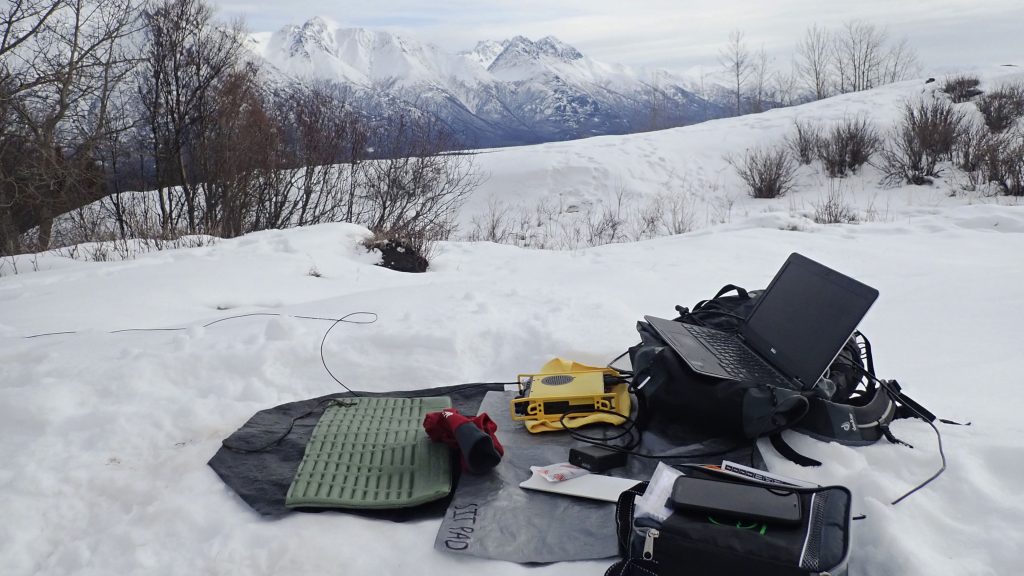
The station consisted of a Yaesu 817ND with a loaded 5/8 wave vertical antenna for the 2 M band. The activation was planned to start during the Saturday morning SSB net, and so a quick for contacts were grabbed there to clinch the activation.

After the net concluded it was time to switch over to HF and run FT8. Surprisingly, five watts and a linked dipole were all that was needed to work the lower 48. This was a great test of a combined HF-VHF activity for the club.
